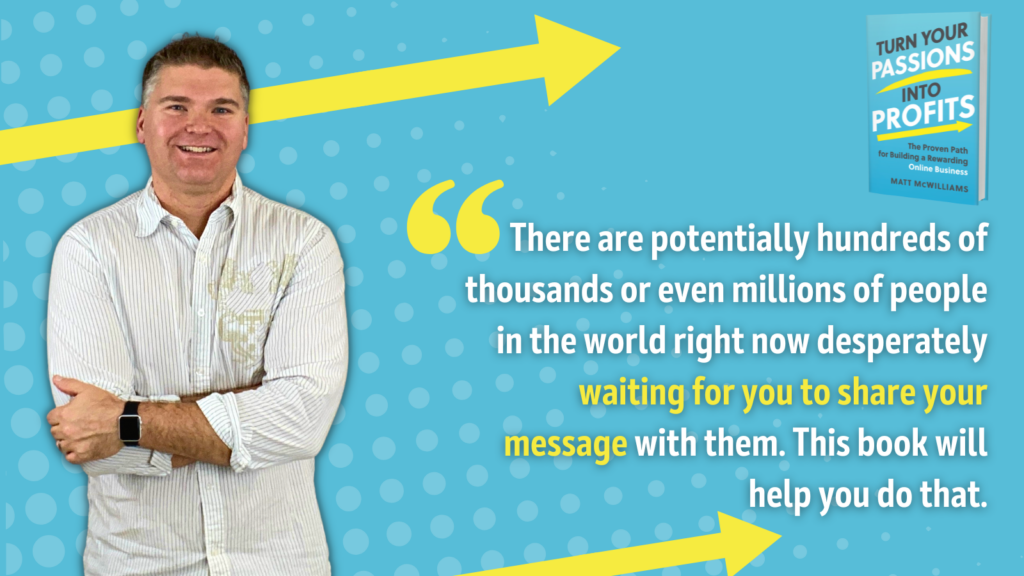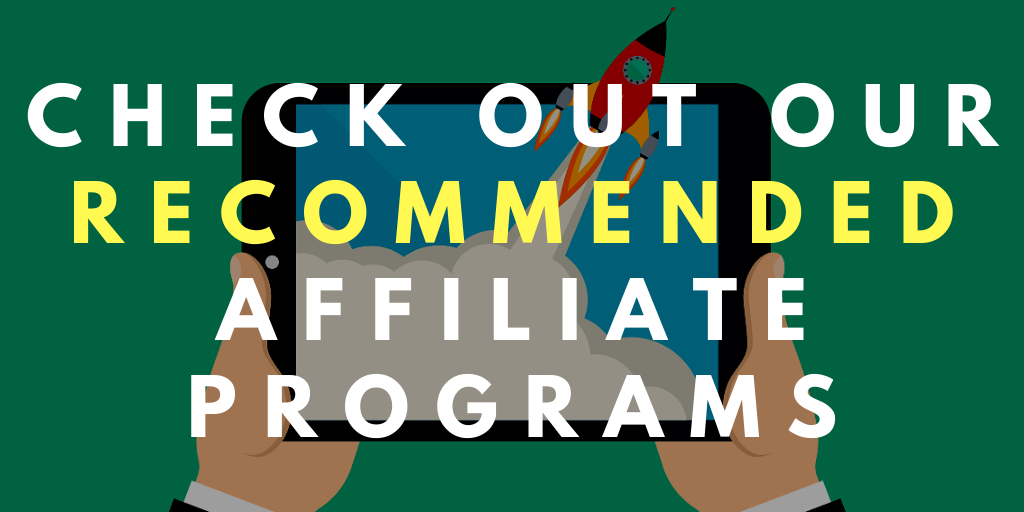Some of the best affiliates I know are teenagers or “young whippersnappers” who just entered their twenties. What makes them so successful at affiliate marketing and what lessons can you learn from them? That’s what this episode is all about!
Click Here for The Written Transcript of This Episode
Links Mentioned in this Episode
Turn Your Passions Into Profits
Quickstart Guide to Affiliate Marketing
Text me at 260-217-4619
Don’t Miss An Episode – Subscribe Below
Previous Episodes of The Affiliate Guy
How to Use a Virtual Assistant to Find Affiliates
Creative Ways to Triple Your Affiliate Commissions
Affiliate Fraud: How to Spot it and What to do About It
The Importance of Getting Personal in Your Affiliate Promotions
Launch Lessons: The Affiliate Army Strikes Again
The Evolution of Affiliate Marketing – The Past, Present, And Future
Why Teenagers Are So Successful At Affiliate Marketing…And What You Can Learn From Them
Some of the best affiliates I know are teenagers or young whippersnappers who just entered their 20s.
What exactly makes them so successful with affiliate marketing and more importantly, what lessons can you learn from them?
Well, that’s what this episode is all about.
So I’ve noticed more and more recently, teenagers, late teens, early 20s, becoming very successful at affiliate marketing.
Now, this does not diminish the fact that I also know a lot of 40 somethings, 50 something, 60 somethings, and even I’m thinking of one of our coaching clients is 78 years old. He is rocking it.
He’s made a little nice encore career making over $5,000 a month for a fleet market.
Now, it’s not to diminish that, I just want to be clear, but I have noticed a lot of teenagers and early 20s, like people that were teenagers when they started, but now they’re 22, they’re really successful in affiliate marketing.
So I was kind of curious about this. So I did some research and I found out why.
And I think the big thing is not just, oh, I’m not a teenager, therefore I can’t learn anything from this, but I’m not a teenager.
What can I learn from those teenagers? What are the lessons that you can learn from them?
I think that’s important and that’s what we’re going to talk about in this episode. So what exactly does make teens so successful to fill in marketing?
==============================================================
Well, number one, teens are typically on the cutting edge of tech who adopts new technologies. It’s not me.
I hear about the technology about three months after most of the teenagers I know have already perfected the technology.
My generation, it was computers and the Internet. My dad never used a computer. I was an internet with by the age of 20. I first got on a computer in high school, so I was old enough to get it.
I think that’s the thing is, like, if you’re twelve, you might understand, but you might not understand the application of it and how it could be turned into a business.
I had a pretty good idea of how to use the internet for business when I was 22 years old, and it had only been around for just a few years.
For teens today, there’s new apps appearing, just seems like daily, right? Just new ways of communicating with people across the world.
Today’s teens, this is crazy, right? They have never known a world without the Internet and computers.
They grew up with it, so they’re more skilled at creating websites and profiles and all these things.
These places just happen to be some of the best places to do affiliate marketing. So they typically are on the cutting edge of technology.
=================================================================
Number two, they keep up with the latest trends.
Now, what’s cool? Quote unquote. Cool is subjective, right?
But what I know for sure is teens know what the latest trends are, and they know them in virtual real time.
I didn’t even know what flossing I mean, like the dance. I didn’t even know what that was until it was long past being a thing.
I still don’t know what Gang of Style is. I’ve heard the song. I don’t even know all that stuff.
Teens are out there, like, creating what is seen as cool in popular culture. So they know what’s trending better than any adult.
So they’re able to integrate the most recent trends in their affiliate marketing. So they set the products that they’re promoting apart from the rest.
To get started with affiliate marketing the right way, download my free quickstart guide to affiliate marketing. Grab your copy here!
They make their products the things that they’re promoting more attractive. So teens and affiliate marketing, they just go naturally together, like peanut butter and jelly, right?
And that’s something that’s always going to be cool by the way it works for them.
===================================================================
Third, teens know how to communicate.
Now, they may not have read how to Win Friends and influence people, but they know how to use the latest apps.
They’re up to date with the most recent trends, so they have a unique way of communicating.
If you’re over 40 and you’ve ever tried to decipher a teen’s text messages, you know what I’m talking about here.
Unique is an understatement. It is a completely different language in the United States.
Teens aren’t speaking. They’re not typing English on their cell phones.
It’s like a completely different language and they can reach people their age by speaking this same unique language.
In a world like anybody can go viral on TikTok, teens are ready and willing to present their ideas in a way that’s welcomed on these new social media apps.
So they have this commonality, and people are more likely to be interested in what they’re selling.
=================================================================
Number four, teens have more flexible time.
One thing I love about affiliate marketing, online business in general, really, it’s incredibly flexible.
You can do it from anywhere, anytime. But many of you listening.
You have a full time job. You’re building your platform on the side. You’ve got a strict work schedule.
You’re more likely to have kids, which means you have less free time. I think of like, this past weekend, we had soccer.
Our son’s birthday party, another birthday party, made a thing at church. We had to pick up our daughter from a sleepover.
And then we spent time there with some of the people from soccer and then, you know, want to do a little bit of yard work and do a little bit of house cleaning and play.
My work week, there was an entire weekend. There are other weekends where we’re just on the road for soccer. Teens don’t have these societal expectations.
Now, if they’re playing soccer, they do, but they have more flexible time. They have more time to build a business than anyone else.
That gives them an enormous advantage to try new things, to make mistakes and not feel like it’s life or death, right?
When you only have 10 hours a week to do something, like you don’t have room to experiment, it is life or death. Like you’re an adult. So this ability and desire to experiment fail.
Learn from failures. That’s a hallmark of great marketers right there.
So they have the opportunity, the flexibility to become great marketers.
==================================================================
Fifth, this almost goes without saying, they get an early start.
The sooner you started with affiliate marketing, the sooner you’ll be successful and so they’re getting started early on.
They’re inevitably going to have better systems in place to outearn latecomers.
I mentioned in the last point, that they’ll have worked through some of their failures and experience when it didn’t matter that much.
They’ll also have more additional income from affiliate marketing to put into their businesses when it matters more.
And the other thing is, they may only be making $2,000 a month. $2,000 a month to a teenager is a lot of money. They can reinvest most of that in the business.
You’re paying off student loan debt or, I don’t know, making the house payment or saving up for a vacation. They accelerate their growth in adulthood.
So what does all this mean for you if you’re not a teenager?
And based on our surveys, 98% of the people listening to this will not be actually over the age of 25.
So for the 98%, the 2% of you are like, haha, I got this. I’m a teenager. If you’re not a teenager, what does this mean for you?
Other than the possibility of being slightly depressing? It’s not all doom and gloom for you, right?
Someone who is a teenager does have these advantages, but there are tons of lessons you can learn from them.
And I want to share five lessons, one for each of the advantages that teens possess.
==================================================================
All right, lesson number one don’t let tech hold you back.
We hear from a lot of students, and a lot of clients that technology is holding them back. They don’t get it.
It’s causing frustration and leading so many they just give up. This has to stop.
All right, listen, I get it. I’ve been there, I’ve done that. A plugin breaks.
I spent three freaking hours searching Google. I remember specifically learning how to fix it myself.
And then when I fix it, I’m like, oh, look at me. I’m awesome.
I accomplished something, right? But the reality is that I didn’t accomplish anything.
Most of the technology issues that I’ve dealt with and I’ve seen others deal with are not moving the needle and leading to sales.
And when I look back at my first, like, five, six years in online business, I realized I wasted thousands of hours doing things I shouldn’t have been doing.
I talked about this in the last episode on how to use virtual assistants to find affiliates.
I was doing a lot of grunt work on the finding affiliate side, but also when I started my business, like learning how to fix little tech issues that barely had any impact on my business moving this thing.
So this little error wasn’t there. I’d spend 3 hours fixing it. Much money does that make me probably nothing.
I fix website errors, learn how to code, et cetera. These things are just such a waste of time.
So how do you stop letting the tech hold you back?
First of all, you delegate it to someone else. If you got a team, let them handle the tech stuff. I don’t touch that stuff anymore.
I’ll do a couple of little things where if I know it’s like a three-minute fix for me, I’ll do it.
I am not going to Google how to fix stuff. I can hire somebody to do that or I probably already have somebody on our team who can do it.
Secondly, hire someone on a contract basis. You can easily find people on Upwork or Fiverr if you haven’t used Fiverr yet.
F-I-V-E-R-R like $25, $50, sometimes $10. They can fix these tech problems in three minutes.
You go, Why would I spend $25 for them to fix it in three minutes? What’s the math on that?
And it’s $1,000 an hour or $500 an hour or whatever. What do they spend that kind of money?
You’re going to spend 3 hours on it. So what would that cost you?
You’re not going to pay $25. Took them through this way because they already know how to do it.
They spent the time learning how to do it. I don’t care. I spend whatever, $60 to get my oil changed.
I don’t want to learn how to change the oil. I don’t have the equipment to do it. I don’t want to learn how to do that.
I pull in and ten minutes later I paid $60 for ten minutes of the oil change. I’m sure some of that is the actual oil.
Most of it is the fact that those people are professionals and have the equipment and they paid for it.
I don’t care if they could do it in 15 seconds. I’d still pay $60.
In fact, I would pay $75 if they could do it in 15 seconds if there was some way to get it done right. That’s the key.
To get it done right as well as they do, I would pay $15 more so I didn’t have to spend nine minutes and 45 seconds additionally there.
So number one, delegate.
Number two, hire someone on a contract basis.
Number three, don’t worry about it.
The odds are most of the tech issues holding you back are not worth worrying about.
I mean, think about is that image has to be perfectly centered for your business to make money? Probably not.
Does that text have to line up perfectly or this blog post is complete trash? No.
And you spend an hour trying to figure it out. I’ve done the same thing. Okay, just to be clear, I’ve done the same thing.
What a stupid waste of my time. Like Elsa. Do as Elsa says, right?
Let it go, let it go. Let it go. Let the image not sit. I can’t do that. Just don’t worry about it.
I probably shouldn’t have been singing there. I should have hired somebody on fiverr to have sang those lyrics, and I probably could have written and sang them.
I’m just going to run with it here, though.
Lesson number one. Lesson number one don’t let the tech hold you back.
================================================================
Lesson number two keep up with the trends. Like, it’s actually pretty easy.
Most people don’t keep up with the latest trends in the industry because they don’t know how to, or they think it’s going to be a full-time job itself.
That is not the way it is right here’s an easy way to keep up with what’s going on in your industry.
Step one spend ten to 15 minutes searching for industry news.
So for me, I did this many years ago. I Google affiliate marketing news. I find a couple of sites.
Step two, I subscribe to the site’s RSS feed and I set those up through Feedburner or one of the other Feedburner, the one I use right now. I just click on the little icon up there.
Anyway, I’m recording now, so I’m not going to do that because it’ll throw me off. But you just subscribe to the RSS feed. Subscribe to their email list.
Step three, set a calendar minder to just read through the RSS feed three times a week. That’s it.
Usually, you’ll find between 3-10 sites. I have nine in the affiliate marketing and general marketing news categories.
Monday, Wednesday, and Friday mornings, I spend roughly three minutes reviewing the headlines and I’ll check out two or three of them over the course of a week.
I’ll save one or two, and read those in depth later in the day or the following day. 20 minutes a week, right?
I spend 20 minutes a week and I’m always up to date on the latest in my industry. It doesn’t take a lot.
You can’t keep up with the trends, and you also don’t need it to take 5 hours a week. So keep up with them.
==================================================================
Number three learn how to communicate with your audience.
You don’t need to know how to speak to teens if your avatar is middle-aged businesswomen if your avatar is homeschooling moms if your avatar is retiree who want to invest safely.
You don’t need to learn that. You don’t need to speak like lol and HTV and emojis. Don’t do that.
In fact, that audience cares if you put an Apostrophe between the N and the T and the word don’t.
That audience cares if you spell out you, not just the letter U. You need to know how to communicate with your audience.
Your audience, that’s what matters. So who is your audience?
I’m going to share an excerpt. I’ve got a book coming out.
If you haven’t heard, that means you haven’t been listening to me talk about it. I’ve got a book coming out.
It’s called Turn Your Passions into Profits, and I talk about how to develop your ideal customer avatar. I’m going to share a little bit of that with you here.
I’ll probably expand upon it, but effectively I’m going to read to you from the book Reading Time with Grandpa Matt here. Hopefully, I got a long way before my grandpa anyway, so I’m going to read to you.
This is from the First Steps, chapter two in my book, turn Your Passions into Profits.
If you want to check that out, by the way, go to passionsintoprofitsbook.com and you can know when that’s coming out.
You can actually even go get that book right now and preordered it even though it’s coming out many months from now.
“Know thy audience. An important exercise in getting clarity on who you serve as developing your ideal customer avatar.
Your avatar is a fictional person who represents your entire audience or a segment of your audience.
This is the one person for whom you are going to create content. You aren’t producing content for the masses.
You’re creating it for your avatar. For one person.
You aren’t creating products or promoting affiliate offers for your audience. You are creating and promoting them for one person, your avatar.
You aren’t marketing, to, quote-unquote, your list. You are marketing to an individual.”
And you can tell there by the way, when I said, this is the one person for whom you are going to create content that I’m totally reading from the book right now, I would never use the word whom, but that’s the right way to write.
Thank you. Colleen, my editor. She was amazing. All right, start with a name first.
“You want to give your avatar a name. My avatar’s name, for example, is Pete. All caps, by the way. PETE all caps. Yes.
I always write PETE and all caps. I’ll explain why in a bit.
In retrospect, considering that my audience is 52% female, I probably should have come up with a more gender-neutral name, but Pete was an actual person in my audience. That personified, my ideal customers. We chose that.
So before you go any further, I want you to take one small step right now and choose your avatar’s name.
If your audience is overwhelmingly male or female, pick a name that represents your target audience.
You might choose a name that represents your target age or geographical location.
Or perhaps, like me, you have an existing customer in mind or a particular friend or family member who perfectly represents your ideal customer.
Once you have the name picked out, it’s time to paint a vivid word picture of your avatar.
In fact, you want to be so detailed in your description of your avatar that they feel like you know them better than they know themselves.
Now, the name itself doesn’t matter, but your avatar needs a name. When I am creating content or creating a product, I am creating it for PETE.
Ready to turn your passions into a profitable business? Check out my new book here!
When I start an email or start a blog post, I imagine that I am writing it specifically for Pete.
In fact, I stole a technique from my friend Chandler Bolt, the founder of a self-publishing school, and I start off each email or blog post with “hey Pete.”
As I write this book, I begin each chapter with those two words as a reminder of who I am writing this book for.
I am writing it for PETE, not the masses. List their values. Next, ask about your avatar’s values. What values do they live by?
Do they have a certain quote or mantra that they follow or certain principles that define how they live?
I know Pete’s values. Pete values time with his family. Pete values hustle and perseverance.
He values knowledge. He sees himself as a lifelong learner. He’s constantly learning new things.
Pete also values the DIY mindset. He likes to learn how to do things himself.
Pete is scratched crappy and values bootstrapping. He loves reading biographies of scrappy entrepreneurs and startups.
Pete also values a sense of humor. One of the things that most attracted him to his wife is that she made him laugh.
He likes to have fun. He doesn’t need to go to wild parties. He’s a family man, after all. But he values somebody who has a sense of humor.
One of the things I hear constantly in our surveys of the people on our email list is that they appreciate my sense of humor and my ability to keep things light.
They also appreciate that I embrace my screw-ups and don’t try to be too polished or perfect.
Pete loves when I’m doing a live lesson and forget a word or knock over my mug. Pete values being able to relate to somebody on a personal level.
He values relationships, authenticity, and genuine connection. As a result, I’m constantly seeking new ways to connect with my audience more personally.
I make it a point to personally reply to as many emails, social media messages, and texts.”
Yes, you can text me personally at 260-217-4619 and I will respond. Many of you know that.
“Now I send personal welcome emails to new students and we host weekly live lessons where we get to engage with hundreds of pets, male and female, answer their questions and connect on a deeper level.
Now we’re at the end of this chapter. Take a moment to think through and write down your avatar’s values.
Now he or she has a name and personal values. Next will define their goals. List their aspirations.
What is driving your avatar to want to accomplish what you will help them to accomplish? These are aspirational and lifelong desires, not goals.
Rather than the goal of losing £10 by June 30, which is a great personal goal to set, by the way.
Here I mean more along the lines of to live a long and healthy life, be full of energy and vitality, and to enjoy each and every day with my spouse and children.
These are your avatars deep seated dreams, not process goals or results-oriented goals.
If you help people quit smoking, their goal is to quit smoking but to live a longer, healthier life.
The goal for investing isn’t to have $1 million in ten years.
It’s to have financial freedom, travel the world, and be able to donate to worthwhile causes.
List their info Sources the next thing you want to explore and the list is their information sources.
Where does your avatar get their information?
What books and magazines are they reading?
What blogs or websites are they frequent?
What podcasts are they listening to?
And what YouTube channels do they subscribe to?
What devices do they use to access this information?
Do they go to certain conferences or other events?
For Pete, my avatar, I know that he likes to listen to podcasts by folks such as Ray Edwards, Pat Flynn, and Russell Brunson.
He reads books by Robert Cialdini, Gary Vaynerchuk, and Jeff Goins. Pete reads blogs such as Pro Blogger, Copy Blogger, and Neil Patel.
He spends an average of 30 minutes every day listening to marketing podcasts and 15 minutes a day reading marketing books.
He spends another 20 minutes on average, reading, marketing and entrepreneur books.
He spends very little time on YouTube but does like to connect via live videos where comments are allowed.
I write those with certainty because I’ve surveyed my audience since 2013 and the numbers have changed very little as a result.
I focused the majority of my marketing efforts on my podcast and live lessons, and this is the first of many books I’m writing since I know Pete reads books, primarily physical books.
So where is your avatar targeting their information?
Where are they learning about your topic already?
Who is influencing them?
Who do they look up to?
Who do they follow on social media?
Those are the types of things you definitely want to know about your avatar.
Surveys are great once you have an audience, but what if you don’t have an audience?
Then consider your own sources of information. What books, blogs, and magazines do you read?
What podcasts do you listen to?
Who do you follow on social media and whose videos do you watch?
Then, once you start attracting a small audience, start asking them these questions.
It may even be worth your time early on to get on a video, call with them, and have a 15 minutes conversation about these questions as you seek to define your avatar clearly.
What are their pain points?
Now you want to turn your attention to your avatar’s challenges.
What are their pain points?
These challenges and pain points are based on their values, which is why you listed them first.
When their reality is out of alignment with their values, it creates a pain point, and solving it is likely a challenge if your avatar values health and vitality, but there are a hundred pounds overweight, that’s a pain point, and most of us know how challenging it can be to lose weight.
Or perhaps like Pete, your avatar values time with family.
When he’s working a full-time job 50 hours a week trying to build a side hustle business at night time with family, vacations and relaxing weekends seem like a pipe dream.
How can I help him find that time and live out his value?
Well, I can help him take his side hustle and make it into a full-time business.
If I can help him make enough money in his side hustle to go full-time, he can quit that job he hates and spends more time with his family.
Part of knowing your avatar better than they know themselves is understanding and relating to their deep-seated pains.
The real pains that are hidden underneath the more obvious, visible pains.
Take, for example, someone who’s trying to quit smoking.
Their addiction and the social stigma that comes from that is certainly enough for most people to want to quit.
But often the real pain lies in their inability to kick a habit. They feel like a failure.
Have a genuine fear that this habit will be the very thing that takes their life at a young age.
If you’re a financial coach, a person might be challenged by the burden of debt.
But their pain point is that they feel like it’s impossible to get out of debt. They can’t even picture a life without debt.
They feel like they’ll always have a car payment, a mortgage, or rely on credit cards to get by.
Before you can help them with the tactical side of spending less than they make, you have to help them with the mindset first.
This can only happen when you have a deep understanding of their mindset and their pain points. So make a list of their sources of pain.
Think about what keeps them up at night, what causes them stress, and what frustrates them. Take a moment to imagine their frustration and their pain.
Odds are this is easy because you’ve been in their exact shoes. That’s how I know Pete’s pain points.
I just imagine myself two years into my blogging journey when I was spending more money each month than I was making.
It’s easy for me to picture Pete’s pain because his pain was my pain.
I can see him waking up at 5:30 in the morning or staying up till two in the morning writing or recording.
I can see him working hard and even enjoying the actual work, only to go another week with no growth, no income, and little to show for his efforts.
I can see him questioning why he’s continuing to put all this effort in with no results.
I can see that he is ready to give up.
I can see the regret he has knowing that the world is missing out on this message.
If your avatar’s pains are different than yours were, that’s okay. Just takes a little bit more effort to really nail them down.
So doing those calls that I mentioned with your new subscribers, reading their social media posts, and surveying them, will help you really dial in on their pain points.”
So I go into more detail in the book about creating an avatar. But the key is to paint a vivid picture of your avatar.
Ask those questions, understand them right, create more appropriate content, ultimately offer products, and promote affiliate offers that they are eager to purchase.
The key here is to speak their language. You have to speak their language. Learn how to communicate with your audience.
So again, don’t let the tech hold you back. Keep up with the trends and learn how to communicate with your audience.
======================================================================
The number four thing you got to do in the lesson here is to create time for your business.
If you’re full-time with your business, this one is not for you. Right?
But the number one difference between people who build a successful side hustle that takes them full time and those who don’t is the successful people who created time for their business.
They created the time. They were intentional about spending a specific amount of time each day, each week working on their business.
They put it on their calendars. They put it on their calendars, and they made it happen.
My business coach, Michael Hyatt, says, what gets calendar gets done.
If it’s not on my calendar, I don’t do it. Just simply put, I will not do it. Why?
Because I only have so much time in a day. Now, there are things that will get done if they’re not on my calendar.
I don’t put a handle. Emergency Pipe repair. All right?
That was something that happened recently. We had a pipe that actually burst in the middle of summer. Something happened.
I was like, I’ve been doing this 30 years. Never seen it happen And there’s a drip in our basement.
This is like four weeks after our basement flooded from some serious rain.
So we were super sensitive about it, and we’re like, we’re going to get that fixed.
That was not on my calendar, but it got done. Otherwise, if it’s not on my calendar, it doesn’t get done.
Like, I put it on my calendar. Do the dishes that are on my calendar now. It’s under my nighttime routine.
I go in, I do my stretches, and I do my planning for the next day. I do my meditation and my devotional And then lately, I’ve got a neck strain.
So I literally put it into my calendar because my nighttime routine now takes like an hour and ten minutes rather than about 55 minutes, because I have to put in 15 minutes of heating my neck.
Actually, 20 minutes. It’s like an hour and 15 heating my neck and doing my exercises.
It’s not something I hopefully have to do in three weeks, but right now it’s in there. I put it on my calendar.
So here’s the thing. Teenagers have more time for their business.
They don’t have unlimited time. They have school. They maybe play sports. They’re involved in clubs.
They have social life and chores and other strange in their time. But they have more time than you do, probably.
So here’s the deal. Put it on your calendar. Find an hour consistently every single day, 2 hours.
If you got it, you can see results from that. But the key is intentionality.
You’ve got to put that hour or two on your calendar. You got to protect it at all costs.
One of the things that I do to make sure that I have time for things like that is I put it on my calendar that I’m going to work on.
Say I’ve got to do a marketing strategy. I’ve got to plan a landing page. I put it on there.
When somebody asks, can you meet tomorrow at four from three to five? I’m working on that strategy.
I can’t meet with them at four if they ask my assistant, when is Matt available?
He will not say 04:00 tomorrow because it’s on my calendar that I’m working on the strategy. Then it’s just, it’s not going to happen.
And one of the things like, from this standpoint to creating this time, have the attitude that your side job is your quote unquote, first job, and then your full-time job is your second job.
Looking for some good affiliate programs to promote? Check out our recommended affiliate programs here!
This is something I adopted from Mark Sieverkropp. This was years ago before he worked for us.
This is probably like eight years ago when I first got to know him. He’s like, I’m off to my second job. This is like 09:00 in the morning, your second job.
He’s like, yeah, spent the last hour and a half working on my blog and then he was off to a second job, which is the one he spent 9 hours a day at.
Now, I’m not suggesting you slack off on your full-time job by any means, but you need to invest your time and energy into your side job first.
And that usually means early in the morning. Use your best hour or so each day to work on your side business.
That includes affiliate marketing. So if you really are better late at night, then do it late at night.
But otherwise, I recommend first thing in the morning. All right?
So again, create time. Put it on your calendar for your business. And then lastly, start now. Start now.
The teens got the earlier start, right? They hit the age of 20 with an email list of 3000.
You didn’t have an email list of one until you were 40. They’ve got a social media following of 5000 people.
You, on the other hand, you’ve got no list, no following and that leaves you with two choices.
Do something or do nothing. It’s your choice. Your choice.
What are you going to do? Start now. Go to Mattmcwilliams.com/quickstart.
All right, I’ve got the guide there to get started with affiliate marketing. It’s your choice.
You can do that and do something, or you can do nothing. Don’t let a late start.
Don’t let less time, don’t let the tech hold you back. Take action now. Take action now.
So the teens, they’ve got the advantages, they’re doing better than you, whatever.
There’s a lot you can learn from them. But take action now. Do something.
Getting started with affiliate marketing has never been easier. It has never been easier.
If teenagers can do it, then anyone can. As long as you’re willing to take that first step.
As long as you’re willing to stop waiting. Just stop waiting and actually take action. So start now.
Don’t let the tech hold you back. Don’t let anything hold you back. Lack of time.
You can do it in an hour a day, half a day, five to six days a week. You can do it in the early mornings or late at night.
You can do it on your lunch break a little bit here and there. You got to take action.
So make sure if you haven’t already, that you hit subscribe because I’ve got a really cool episode coming up next week.
It’s called The Massive Shift in Affiliate marketing and the opportunity it’s creating for you. I’m super excited about this episode to share with you.
I’ve shared it with a small group of people before and I’m really excited to share it with you in next week’s episode.
So make sure if you haven’t yet, hit subscribe so that you cannot miss that one because you don’t want to miss it.
Also, if you know somebody who benefits from this episode, make sure you share it with them. That’s super important as well.
Make sure that you leave a rating review if you haven’t yet. That helps us to get the word out to more people.
And if you’ve got questions about this episode or anything else, you can text me anytime. 260-217-4619.
Just shoot me a text anytime. Happy to answer your questions there. I’ll see you in the next episode.
Questions?
Text me anytime at (260) 217-4619.
Or…check out some of my free reports to help you get on the right track:
 |
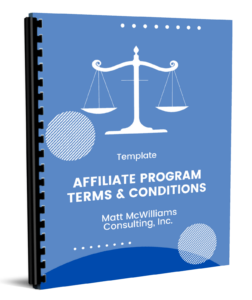 |
 |
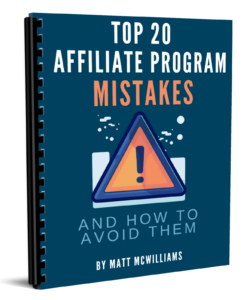 |
 |
 |
 |
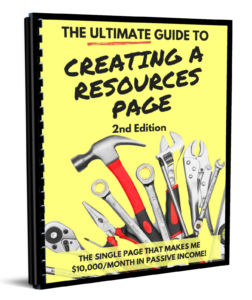 |
 |


